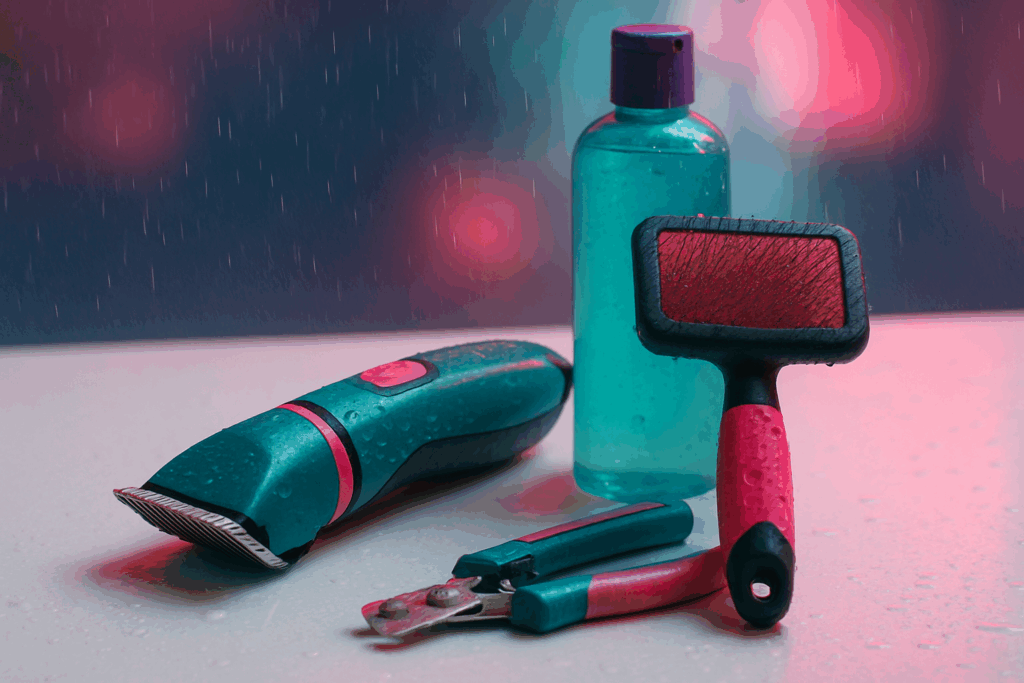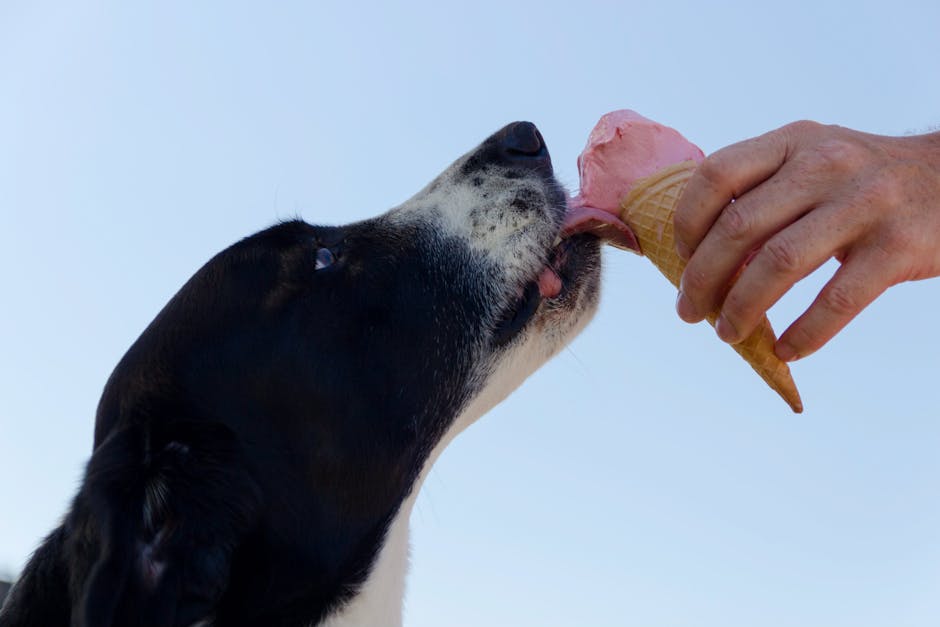Why Grooming Is More Than Just Looks
Grooming goes beyond vanity. It’s one of the simplest, most overlooked ways to keep a pet healthy. Regular brushing helps prevent painful matting, reduces shedding, and boosts circulation through the skin. Clean ears cut down on infections. Trimmed nails mean safer movement—not only for your pet, but for your floors, furniture, and your own shins.
But grooming isn’t just physical—it’s emotional too. A consistent grooming routine builds trust. Whether it’s a calm brushing session or a quick paw check, these small rituals tell your pet they’re cared for. And a pet that feels safe tends to be happier, more relaxed, and easier to handle in day-to-day life.
Neglect the basics, though, and problems stack up fast. Long nails can crack or cause posture issues. Unkempt coats trap dirt, parasites, and can lead to skin conditions. Matted fur pulls on skin and restricts natural movement. Worse, it often takes a vet or a groomer to fix what a little regular attention could’ve prevented at home.
Bottom line: grooming saves more than appearances—it protects your pet’s health, comfort, and connection with you.
Brush Basics: Picking the Right One
Not all brushes are created equal—and not all fur is built the same. If your dog has long, thick hair that mats easily, a slicker brush is your best friend. It gets deep without pulling too hard. For shorthaired breeds, a bristle brush keeps things clean without overdoing it. Got a double-coated pup like a husky? You’ll want an undercoat rake to manage the heavy seasonal fallout without wrecking the top coat.
The key to a good brush session is keeping it chill. Start slow, go with the grain, and watch your pet’s body language. If they tense up or flinch, back off and try a different angle—or maybe a different tool altogether. Use treats at the start if you need to build trust.
As for frequency, don’t wait for knots or clumps to show up. A simple rule: brush every few days for smooth coats, daily for long or high-shed breeds. It’s less about a strict schedule and more about keeping buildup (and stress) to a minimum. A three-minute brush every other day beats a grooming battle once a month.
Nail Trimmers That Actually Work
Keeping your pet’s nails trimmed isn’t just about appearances—it’s a vital part of their overall health. Overgrown nails can cause pain, posture issues, and even long-term joint problems. Choosing the right trimmer and learning how to use it correctly makes all the difference.
Types of Nail Trimmers
Not all trimmers are created equal. Understanding the options helps you make the best choice based on your pet’s size and temperament.
- Guillotine-style clippers
- Best for small to medium-sized pets
- Easy to use but can crush thick nails if not sharp
- Scissor-style clippers
- Ideal for larger pets with thick nails
- Offers better control and cleaner cuts
Choosing the correct style improves safety and overall trimming experience for both the pet and the owner.
When Nails Are Too Long
Knowing the signs of overgrown nails helps you stay ahead of potential problems:
- Nails touching or tapping the floor when your pet walks
- Altered posture or limping
- Reluctance to walk on hard surfaces
- Visible curvature in the nail
Trimming regularly can prevent these discomforts and avoid long-term issues.
How to Trim Without Pain or Stress
Pet nail trimming doesn’t have to be traumatic. With the right preparation and approach, it can be quick—and even positive.
Pro tips for a smooth session:
- Always use sharp, clean trimmers to avoid splintering
- Identify the quick (the pink nerve in light-colored nails) and avoid cutting too close
- Trim a little at a time, especially if nails are very long
- Reward your pet with treats and calm praise afterward
- If bleeding occurs, apply styptic powder immediately
Consistency and patience are key. The more familiar your pet becomes with the routine, the calmer future sessions will be.
High-Quality Shampoo and Conditioner
Your pet’s skin is thinner and more sensitive than yours. That means what’s in their shampoo matters—a lot. First, skip anything with sulfates, parabens, artificial dyes, or heavy fragrances. These ingredients can strip natural oils, trigger allergies, and dry out skin fast. If you can’t pronounce it and it sounds like a chemistry experiment, it probably doesn’t belong in your pet’s bath.
For pets with sensitive skin, look for hypoallergenic shampoos. These formulas are gentle, minimalistic, and often packed with calming ingredients like oatmeal, aloe vera, or chamomile. They won’t foam much—that’s okay. Lather doesn’t equal clean. What matters is soothing itchy, inflamed areas without introducing more problems.
Deciding between dry and wet shampoo? Wet is best for deep cleaning—removing dirt, oils, and odors. Dry shampoos work in a pinch, like after a muddy walk or in colder months when baths aren’t convenient. Use dry shampoo as a stopgap, not a stand-in. It freshens up but doesn’t replace proper baths.
Bottom line: smart grooming starts with reading labels. Your pet can’t say what’s irritating—it’s on you to keep their skin calm, clean, and happy.
Ear Cleaners and Eye Wipes
Not the most glamorous part of grooming, but absolutely essential. Dirty ears and gunky eyes are more than just unsightly—they’re invitations for infection. The right tools make all the difference. For ears, use vet-approved, alcohol-free cleaners that gently dissolve wax and debris. Eye wipes should be soft, unscented, and designed to clear away tear stains without irritating sensitive skin.
Here’s the trick: don’t rush. Trying to clean a pet’s ears or eyes like you’re defusing a bomb will only make them resist. Instead, keep things calm, steady, and treat-heavy. Start with gentle handling, reward after each step, and build a routine your pet can get used to. You don’t need to clean every day unless your vet tells you to—but once or twice a week is usually enough to stay ahead of problems.
As with grooming in general, consistency wins. It takes less time to do small, regular cleanings than it does to deal with a full-blown infection down the line.
Grooming Tools for Shedding Season
If there’s fur on your floor, clothes, and toothbrush—congrats, it’s shedding season. Whether you’ve got a husky blowing their coat or a shorthaired cat dropping hair like confetti, managing the mess starts with the right tools.
De-shedding brushes are built to go deep without scratching. Look for ones with stainless steel edges if your pet has a thick undercoat. For sensitive skin or fussier animals, de-shedding gloves let you sneak grooming into cuddle time. They won’t go as deep, but they’re great for keeping things tame between heavy-duty sessions.
When the fur is flying, don’t just react—plan. Increase brushing to daily during peak shedding months (usually spring and fall). Quick, consistent sessions beat the occasional fur-apocalypse cleanup. And always brush before a bath, not after, to prevent matting.
Shedding is normal, but know the red flags. Bald spots, irritated skin, or sudden hair loss may point to more than a seasonal shift—think allergies, stress, or something medical. When in doubt, talk to your vet.
Bottom line: fur happens. Control it with good tools, a simple routine, and a sharp eye for what’s typical. Your vacuum will thank you.
Clippers and Styling Tools
Trimming your pet at home doesn’t have to feel overwhelming. With the right clippers and a little patience, many pet owners find that basic grooming can be done safely—and even become part of a bonding routine.
When DIY Trimming Makes Sense
While some grooming jobs are best left to the professionals, there are times when trimming at home is the smart choice:
- You’re maintaining a specific style between professional grooming sessions
- Your pet becomes anxious during trips to the groomer
- Budget or schedule makes frequent salon visits unrealistic
- You’re dealing with minor matting or overgrowth in low-risk areas like paws or around the eyes
Note: DIY grooming works best on pets with predictable coat types and more tolerant temperaments.
Basic Maintenance vs. Show Grooming
Before picking up clippers, it’s important to know what kind of grooming your pet really needs:
- Basic maintenance includes regular trims around paws, sanitary areas, ears, and face. These trims keep your pet comfortable and clean.
- Show grooming requires advanced techniques and breed-specific styling. It usually takes professional training and experience, so leave this to the experts.
Ask yourself: Are you trimming for comfort—or to meet appearance standards?
Safety First: Handling Electric Grooming Tools
Using electric clippers at home can be safe—but only with proper technique and preparation:
- Choose the right blade: Look for blades suited to your pet’s coat type (e.g., fine, curly, or double coat)
- Keep blades cool: Avoid heat buildup that can cause discomfort or burns
- Go slowly and calmly: Sudden movements increase the chance of nicks or cuts
- Test noise tolerance: Start by turning tools on away from your pet to desensitize them
- Always inspect the skin for any irritations or wounds before trimming
Invest in a high-quality, low-vibration clipper to make the experience smoother—for both you and your pet.
Storage, Cleaning, and Sanitizing
A solid grooming routine doesn’t stop at brushing or trimming; it extends to how you store and maintain your tools. If your grooming kit is a mess of tangled brushes and dull clippers, you’re not just being disorganized—you’re risking your pet’s health.
First, use a dedicated storage case or organizer. Keep sharp tools capped, and make sure everything is dry before putting it away. Moisture invites rust and bacteria, fast.
Tool maintenance isn’t complicated, but it’s easy to skip. Clean brushes weekly—remove fur, wash with mild soap, and let them air dry completely. Disinfect metal tools like clippers and nail trimmers with rubbing alcohol. And check electrics for loose wires or dull blades regularly.
Cross-contamination is quietly common. Using the same dirty tools between pets (or worse, between grooming sessions) spreads bacteria, ear mites, and skin irritants. One hairy comb can turn into a vet bill. Clean after every session. No shortcuts.
Good grooming gear works better, lasts longer, and keeps your pet safer. Treat your tools with the same care you give your animal.
Smart Add-Ons for Modern Grooming
The future of pet grooming isn’t just brushes and clippers—it’s tech-driven. Digital thermometers and skin sensors are becoming part of the at-home grooming lineup, helping pet owners track health metrics right alongside coat care. These tools flag temperature spikes or skin irritations early, which means fewer surprises at the vet.
Smart collars are moving beyond GPS. Many now integrate with grooming schedules, send hydration reminders, and even monitor heart rate and activity levels. Sync them with your grooming app, and you’ll know when it’s time for a brushing session based on your pet’s behavior or skin condition. It’s about being proactive, not reactive.
Want to dig deeper into the best tech out there? Don’t miss this guide: The Best Smart Collars for Monitoring Pet Health.
Final Word: Invest Early, Win Long-Term
It’s tempting to grab the cheapest brush or shampoo on the shelf and call it a day. Don’t. Grooming gear isn’t just about appearances—it’s comfort, health, and time saved. Buy tools that last, feel right in your hand, and actually work for your pet’s specific needs.
A decent brush can mean the difference between a relaxing moment and a scratched-up wrestling match. High-quality clippers cut cleaner and quieter. Even little things, like ergonomic nail trimmers or calming shampoos, can turn grooming from chore to routine.
And that’s the whole point—a routine. One that you and your pet can both live with. When the tools work well, you’re more likely to use them regularly. And your pet? They feel the difference. Less stress, fewer tangles, healthier skin, and no more overgrown claws clicking on the floor.
Get the right tools. Build the habit. Your pet may not say thanks—but they’ll show it.




